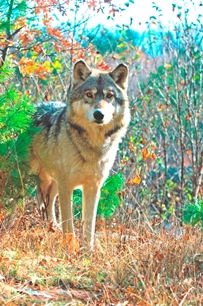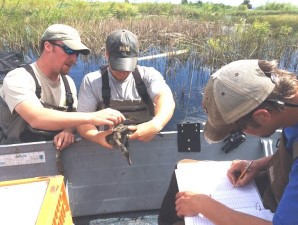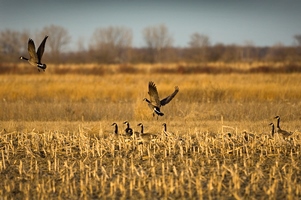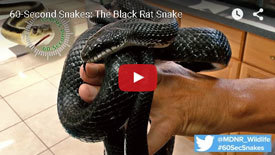By Glen Wunderlich
As one of four boys growing up in rural Massachusetts, Howard Stowe was destined to be a farmer. Accordingly, his high school vocational agriculture curriculum at Arms Academy in Shelburn, Massachusetts was geared toward just that. However, a particularly astute teacher convinced his parents that Howard had potential beyond the farm and helped arrange funding to the University of Massachusetts. That vision changed Howard’s life.
After graduating high school in 1944, Howard earned a bachelor’s degree in animal husbandry at UMass and came to Michigan State University, where he earned a master’s degree in animal nutrition 11 years later, after a two-year stint in the Army. In 1960 he earned his Doctor of Veterinary Medicine degree and married Barbara, who earned her PhD in textile chemistry at North Carolina State University. With stops that included the University of Kentucky, Howard joined the medical faculty at the University of North Carolina at Chapel Hill. Later, the Stowes both were faculty members at Auburn University.
In 1977, Howard returned to MSU CVM’s Department of Large Animal Clinical Sciences, where he resumed his nutrition interests. He established the Nutrition Section in the Animal Health Diagnostic Laboratory in 1979 and was a founding member of the American College of Veterinary Nutrition (ACVN).
The Stowes have since added to their noteworthy legacy at MSU by establishing the Howard D. and Barbara S. Stowe Veterinary Nutrition Residency Endowment. This endowment will support a nutrition residency position at MSU CVM.
The Stowe’s endowment is as logical and needed as it is generous, says Dr. Tom Herdt, professor in the Department of Large Animal Clinical Sciences and head of the Nutrition Section at MSU. “Dr. Stowe was one of the founders and moving forces in the creation of the American College of Veterinary Nutrition. In order to foster the growth and effectiveness of this veterinary specialty college, it is imperative that adequate training programs exist. The DCPAH Nutrition Section, and MSU CVM, are outstanding places to provide such training.”
In 1978, the Stowes purchased a 160-acre farm, including a house built in the 1840s in rural Owosso, so that Howard could return to his roots – although this time around it would be more of an avocation.

Stowe Residence
On the north side of the Looking Glass River was sheep pasture land, which was sectioned off with wire fencing replete with rocks piled along the fence lines. Howard removed it all with the aid of his 1952 John Deere model B tractor and his own muscle. He has also recounted how he seeded the fields to alfalfa with a chest-mounted spreader.
Some 20 years ago, I was granted permission to hunt the land and will be eternally grateful for the opportunity to remove some varmints and to stock my freezer with venison over the years. And, I will always remember last year’s successful spring turkey hunt, after which I sunk my pickup truck in the inconspicuous and unforgiving mud on the way out. Without hesitation, the old John Deere and Howard teamed up to get me on my way.
The historic property is slated to be sold at auction through Sheridan Realty and Auction Co. September 16th. Consequently, Howard and Barbara are now turning another page in life’s book and will make Reston, Virginia their home in the twilight of their years.

Wood-Sided Barn
On behalf of those you’ve touched and those fortunate students on the horizon, I thank you, Howard and Barbara, for the opportunities and memories of the past and those yet to be conceived.

 The Michigan Department of Natural Resources today announced confirmation of gray wolf occurrence in Emmet County, marking the second confirmation of wolf presence in the Lower Peninsula since 1910.
The Michigan Department of Natural Resources today announced confirmation of gray wolf occurrence in Emmet County, marking the second confirmation of wolf presence in the Lower Peninsula since 1910. Efforts by a Michigan Department of Natural Resources crew to band ducks at the Portage Marsh in Delta County were showcased recently on an episode of “Discovering,” a weekly outdoors program produced by Brian Whitens and broadcast at on WLUC-TV6, Marquette.
Efforts by a Michigan Department of Natural Resources crew to band ducks at the Portage Marsh in Delta County were showcased recently on an episode of “Discovering,” a weekly outdoors program produced by Brian Whitens and broadcast at on WLUC-TV6, Marquette.



 time believing it wasn’t always that way. Michigan’s resident Canada goose population – which produces the lion’s share of the annual harvest – was virtually nonexistent a century ago and not especially noteworthy five decades later.
time believing it wasn’t always that way. Michigan’s resident Canada goose population – which produces the lion’s share of the annual harvest – was virtually nonexistent a century ago and not especially noteworthy five decades later.
 “We’re really excited about the survey results for the Great Lakes piping plover and Kirtland’s warbler,” said DNR Field Operations Manager Keith Kintigh. “To have both of these species reach record numbers this year shows what great partnerships can do for wildlife conservation over time.”
“We’re really excited about the survey results for the Great Lakes piping plover and Kirtland’s warbler,” said DNR Field Operations Manager Keith Kintigh. “To have both of these species reach record numbers this year shows what great partnerships can do for wildlife conservation over time.”